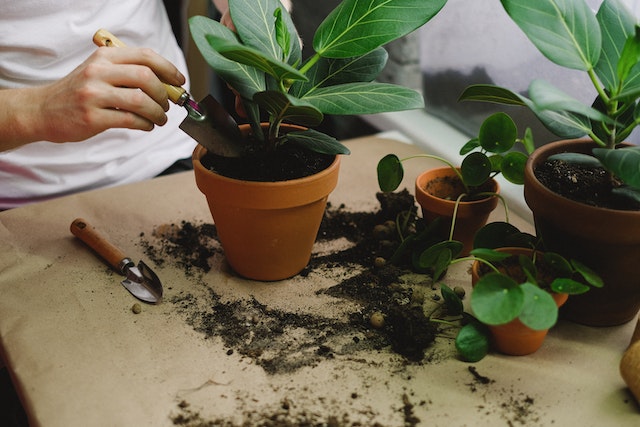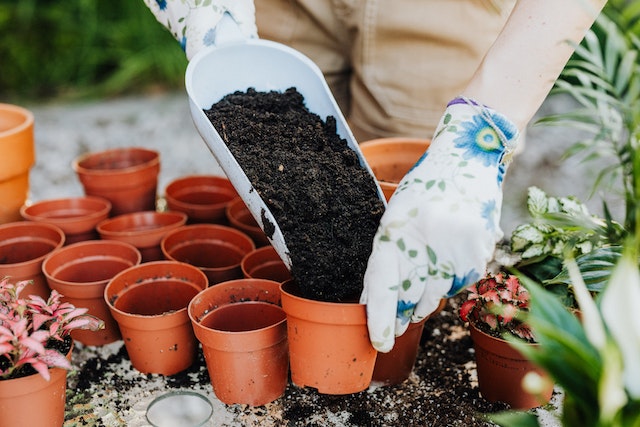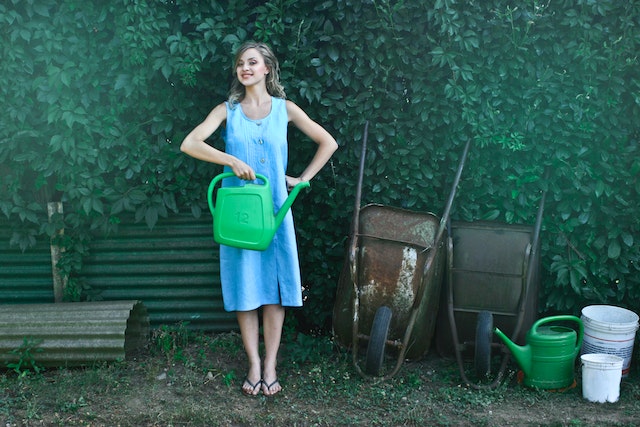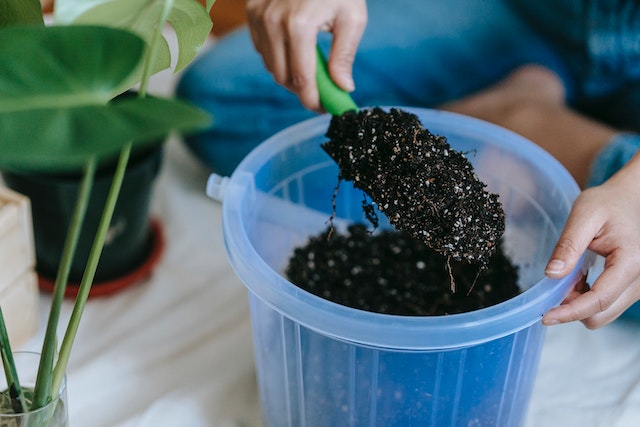Millions of people all around the world consider gardening to be a relaxing pastime. It’s a wonderful opportunity to improve one’s health, save money, and help the environment all at once. While some people may have access to a backyard garden, they may not have the space, time, or money to keep it up. The solution is to use buckets for gardening. Grow anything from flowers to vegetables in a tiny space with ease and efficiency by using buckets for gardening. Here, you’ll find an in-depth guide to bucket gardening, covering every step from preparation to harvesting.
Table of Contents
#1. Bucket Gardening: Overview
As a subset of container gardening, “bucket gardening” makes use of, you guessed it, buckets to house plants. It’s a convenient choice for those who need to make do with confined quarters, who wish to cultivate plants on a balcony or patio, or who want to set up a portable garden. Plastic, metal, and even repurposed items like tires and barrels can all be utilized to make gardening buckets.
Controlling the soil quality and nutrients your plants receive is a major benefit of planting in buckets. If you’re worried about your plants getting enough nutrients in a traditional garden where the soil may become compacted or depleted over time, consider growing them in buckets instead.
#2. Getting Started with Bucket Gardening

You only need a few simple things to begin gardening in buckets:
Buckets
As long as it has holes at the bottom for water to drain out, any kind of bucket will do for gardening. To protect your plants, only use recycled buckets that have been thoroughly cleaned and have no lingering chemicals or residues.
Soil
Select a premium potting soil loaded with beneficial microbes, humus, and other organic compounds. To boost the soil’s quality, you can also incorporate nutrients like compost.
Plants
It’s important to pick plants that will thrive in the space provided by your buckets. Herbs like basil and parsley, as well as vegetables like tomatoes and peppers, are great choices for novice gardeners.
Fertilizer
Adding fertilizer to your buckets may be necessary to provide your plants with the nutrition they need to flourish and thrive.
#3. Preparing Your Buckets for Gardening

Gardening containers need to be prepared before planting can begin. Here’s how:
Drill Drainage Holes
Drill many holes into the base of each bucket for water to escape. This will prevent your plants from being waterlogged by draining away any extra water.
Add a Layer of Gravel
Add a layer of gravel or tiny stones to the bottom of each bucket before adding soil to further promote drainage.
Fill With Soil
Pack premium potting soil into each bucket, leaving a small opening at the top for watering.
Add Fertilizer
At this point, you may or may not want to add fertilizer to your buckets, depending on the plants you’re growing. To find out how much fertilizer to use, just read the package’s directions.
#4. Planting Your Buckets

You can now begin planting since your buckets are ready to go. Here’s how:
Choose Your Plants
Make sure your chosen plants can thrive in the space provided by your buckets. Think about the temperature and humidity of the area, as well as how much direct sunlight your buckets will get.
Create a Planting Plan
Plan out the layout of your buckets beforehand so you know exactly where to put each plant. Having adequate areas for growth is essential, and this will help you do that.
Dig Holes for Your Plants
Dig planting holes with a trowel or your bare hands. The holes must be dug deep enough to hold the plant’s roots.
Plant Your Plants
Carefully unload your potted plants into the prepared planting spaces. The root ball should be planted so that its top is flush with the soil surface.
Water Your Plants
Water your plants thoroughly right after you’ve planted them to help them adjust to their new surroundings.
#5. Maintaining Your Bucket Garden

After you’ve planted your bucket garden, you’ll need to tend to it so that your plants thrive. Follow these guidelines to keep your bucket garden flourishing:
Water Regularly
The frequency of watering your bucket garden will vary depending on the type of plants you’re cultivating, as well as the local temperature and humidity. Be sure to water deeply enough to reach the plant’s roots.
Fertilize Regularly
It’s possible that every few weeks, or even every few days, you’ll need to add fertilizer to your buckets, depending on the plants you’re growing. To find out how much fertilizer to use, just read the package’s directions.
Watch for Pests
Pests like aphids and spider mites can cause problems in bucket gardens just as they might in conventional ones. Watch for symptoms of insect damage, such as leaf yellowing or leaf holes, and treat accordingly.
Prune Your Plants
Plants that are pruned on a regular basis grow bushier and often bear more fruit or blooms. Using a pair of clean, sharp scissors or pruning shears, remove any suckers or side shoots that have formed from the main stem, as well as any damaged or diseased leaves or stems.
Rotate Your Plants
It’s a good idea to rotate your plants every few months to keep the soil from drying up in their buckets. This will prevent larger plants from blocking the sunlight your smaller plants need.
Conclusion
A beautiful and fruitful bucket garden that yields fresh herbs, vegetables, and flowers for years to come can be cultivated with a minimum of effort and care. Whether you’re a pro at gardening or just starting out, planting your own plants in a bucket is a fun and easy way to spend time in the fresh air and sunshine.

